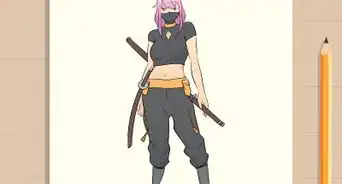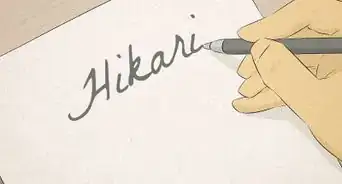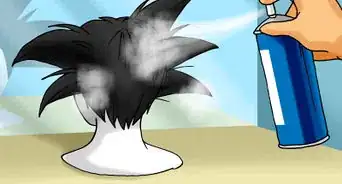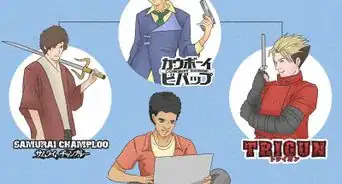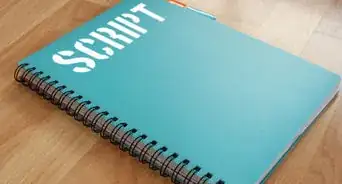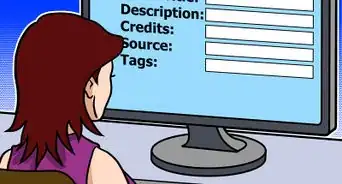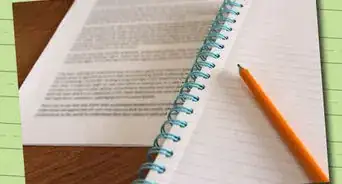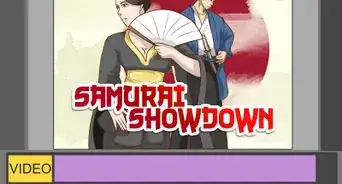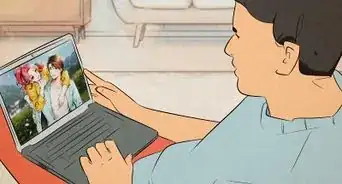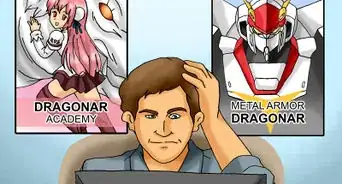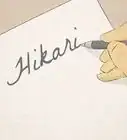wikiHow is a “wiki,” similar to Wikipedia, which means that many of our articles are co-written by multiple authors. To create this article, 18 people, some anonymous, worked to edit and improve it over time.
This article has been viewed 31,904 times.
Learn more...
Anime is very popular all around the world. In fact, one of the most common reasons for learning Japanese is to watch anime in the original language without subtitles. Many people use anime to learn Japanese even if watching anime without subtitles is not the reason for learning Japanese. However, many people get lost while trying to use anime to learn Japanese due to the characters talking fast and/or not having a clue what any of the words mean. The difference in grammar can also cause people to be discouraged. Read on to learn how to effectively learn Japanese using anime.
Steps
Hiragana, Katakana, and Kanji
-
1Turn on Japanese subtitles. While it is possible to learn the writing systems through anime, it can be very hard to impossible without Japanese subtitles. Learning Hiragana and Katakana first is vital as it will help you improve your pronunciation.
-
2Pay attention to what the characters are saying along with what the Japanese subtitles show. Find a place where the characters say only 1-3 words so you can focus on one thing at a time, then listen to what the characters say, and then read the Japanese subtitles.
- Keep in mind that Hiragana and Katakana are not alphabetical like in English. Each symbol represents a different syllable, with the exception of ん (n) and the five vowels, あ (a), い (i), う (u), え (e), and お (o). For example, the symbol か represents the syllable ka and さ represents sa.
Advertisement -
3Find words that might sound familiar to you. Katakana is used for foreign words, such as loanwords from other languages and non-Japanese names. Katakana also looks distinct from Hiragana and Kanji as it contains a lot of straight lines and tend to be more simple than Hiragana and Kanji. Look for words that sound familiar to you, and then look for Katakana, which should be easy to identify.
- Katakana is also used for onomatopoeia, or sound words. Japanese onomatopoeia often consists of one or two syllables and is usually repeated.
Vocabulary
-
1Pay attention to both the dialogue and the animation. Paying attention to the animation will better help you understand words in context. It also helps you learn words. For example, if a character points to a cat and says 「ねこ」(Romaji: Neko), you can understand that 「ねこ」means cat.
- Another example: If a character asks for a りんご (Romaji: Ringo), and then they're given an apple, you can guess that 「りんご」means apple.
-
2If you hear a particular word multiple times in a given sentence, look up the meaning of the word. You can use a dictionary (physical or online), translator, or just a plain Google search. Whatever helps you understand the meaning of a word.
- Look up a word multiple times to confirm what the word means. Looking a word up more than once will also provide you with multiple different explanations and translations, which can help you understand the exact and precise meaning of the word.
-
3Once you've mastered a word, look up the Kanji of that word. Kanji is used very often throughout Japan and not learning Kanji means you won't be able to read signs, restaurant menus, or pretty much anything in Japanese. Don't skip Kanji.
- Kanji usually have at least 2 readings: it's On'yomi reading(s) (the original Chinese reading) and it's Kun'yomi reading(s) (the native Japanese reading), with some exceptions.
- In order to read most Japanese texts, you'll need to know about 1,000-20,000 Kanji.
Grammar
-
1Learn particles. The most common Japanese particles include:
- は (used to identify the topic of a sentence. Note that although the symbol は is read as ha, when it's a particle, it's read as wa.),
- の (used to indicate possession, read as no),
- を (used to identify that something is the direct object of a verb. Note that although this symbol is wo, it is pronounced as o.)
- The particles listed above are just 3 of the most common ones. There are thousands of Japanese particles with many different uses and meanings.
-
2Learn inflections. In Japanese, verbs are inflected to represent different things, although the basic meaning of the verb stays the same. For example, take the verb 食べる (Romaji: Taberu), meaning to eat. If you want to say that someone wants to eat, you replace る with たい and make it 食べたい (Romaji: Tabetai). If you want to say that someone ate, you replace る with た and make it 食べた (Romaji: Tabeta). And if you want to say that someone didn't eat, you replace る with ない and make it 食べない (Romaji: Tabenai).
- While verb inflections may seem confusing at first, in Japanese (unlike in English), there are no irregular verbs. However, inflections can change depending on the type of verb.
Warnings
- Most anime will more often than not include words that don't exist in the English language. The translator usually will find a word to use as a 'place holder' which will prove to be misleading.⧼thumbs_response⧽
- You might not want to use an anime you have already seen because you might confuse understanding with remembering.⧼thumbs_response⧽
- Don't always watch anime with subtitles. You may find yourself more focused on reading and less focused on listening. Search for RAW anime- Japanese dub without subtitles.⧼thumbs_response⧽

